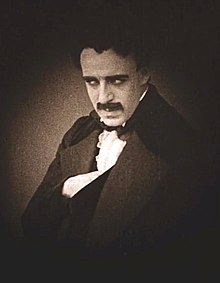Raoul Walsh
His work has been noted as influences on directors such as Rainer Werner Fassbinder,[3] Jack Hill,[4] and Martin Scorsese.
After his mother died, he left home when he was fifteen years old and traveled through Texas, Montana and Cuba, also working in Mexico as a cowboy.
Walsh played John Wilkes Booth in Griffith's epic The Birth of a Nation (1915) and also served as an assistant director.
This movie was followed by the critically acclaimed Regeneration in 1915, the earliest feature gangster film, shot on location in Manhattan's Bowery district.
He later directed The Thief of Bagdad (1924), starring Douglas Fairbanks and Anna May Wong, and Laurence Stallings' What Price Glory?
While on location for that film Walsh was in a car crash when a jackrabbit jumped through the windshield as he was driving through the desert; he lost his right eye as a result.
In the early days of sound with Fox, Walsh directed the first widescreen spectacle, The Big Trail (1930), an epic wagon train western shot on location, across the West.
An undistinguished period followed with Paramount Pictures from 1935 to 1939, but Walsh's career rose to new heights after he moved to Warner Brothers, with The Roaring Twenties (1939), featuring James Cagney and Humphrey Bogart; Dark Command (1940), with John Wayne and Roy Rogers (at Republic Pictures); They Drive By Night (1940), with George Raft, Ann Sheridan, Ida Lupino and Bogart; High Sierra (1941), with Lupino and Bogart again; They Died with Their Boots On (1941), with Errol Flynn as Custer; The Strawberry Blonde (1941), with Cagney and Olivia de Havilland; Manpower (1941), with Edward G. Robinson, Marlene Dietrich and George Raft; and White Heat (1949), with Cagney.



